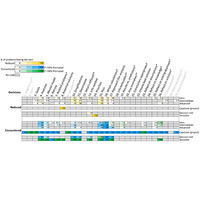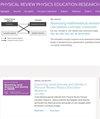描述本科物理课程中的决策机会
IF 3.6
2区 教育学
Q1 EDUCATION & EDUCATIONAL RESEARCH
Physical Review Physics Education Research
Pub Date : 2024-07-29
DOI:10.1103/physrevphyseducres.20.020103
引用次数: 0
摘要
物理教育的一个主要目标是培养学生解决问题的能力。要成为解决问题的专家,学生必须有机会刻意练习这些技能。在这项工作中,我们采用了之前描述的问题解决定义,该定义由专家科学家做出的 29 项决策组成。我们通过对一所著名大学物理入门、中级和高级课程作业中所要求的决策进行编码,量化了物理系本科生在做出每个决策时的练习量。以研究为重点的毕业设计课程是唯一一个提供大量决策练习的例子。传统课程作业中布置的问题只需要几个决策,而且经常减少学生做出其他决策的潜在机会。此外,我们修改了传统的物理课程作业,以提供更多的决策练习。我们观察到,这增加了学生在解决问题时实际做出决策的数量。这项研究表明,为了让本科生更好地为解决现实世界中的问题做好准备,我们必须为学生提供更多的机会,让他们在解决问题时做出决策并付诸行动。本文章由计算机程序翻译,如有差异,请以英文原文为准。

Characterizing decision-making opportunities in undergraduate physics coursework
A major goal of physics education is to develop strong problem-solving skills for students. To become expert problem solvers, students must have opportunities to deliberately practice those skills. In this work, we adopt a previously described definition of problem solving that consists of a set of 29 decisions made by expert scientists. We quantified the amount of practice undergraduate physics students get at making each decision by coding the decisions required in assignments from introductory, intermediate, and advanced physics courses at a prestigious university. A research-focused capstone course was the only example that offered substantial practice at a large range of decisions. Problems assigned in the traditional coursework required only a few decisions and routinely reduced potential opportunities for students to make other decisions. In addition, we modified traditional physics coursework to offer more decision-making practice. We observed that this increased the number of decisions students actually made in solving the problems. This work suggests that to better prepare undergraduates for solving problems in the real world, we must offer more opportunities for students to make and act on problem-solving decisions.
求助全文
通过发布文献求助,成功后即可免费获取论文全文。
去求助
来源期刊

Physical Review Physics Education Research
Social Sciences-Education
CiteScore
5.70
自引率
41.90%
发文量
84
审稿时长
32 weeks
期刊介绍:
PRPER covers all educational levels, from elementary through graduate education. All topics in experimental and theoretical physics education research are accepted, including, but not limited to:
Educational policy
Instructional strategies, and materials development
Research methodology
Epistemology, attitudes, and beliefs
Learning environment
Scientific reasoning and problem solving
Diversity and inclusion
Learning theory
Student participation
Faculty and teacher professional development
 求助内容:
求助内容: 应助结果提醒方式:
应助结果提醒方式:


